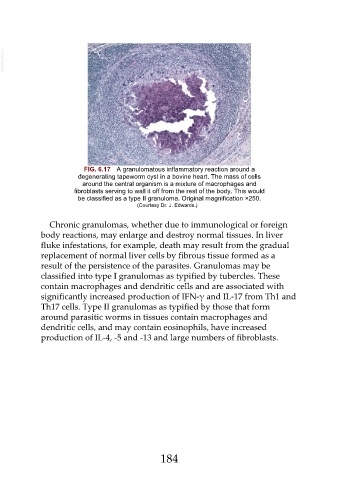Page 184 - Veterinary Immunology, 10th Edition
P. 184
VetBooks.ir
FIG. 6.17 A granulomatous inflammatory reaction around a
degenerating tapeworm cyst in a bovine heart. The mass of cells
around the central organism is a mixture of macrophages and
fibroblasts serving to wall it off from the rest of the body. This would
be classified as a type II granuloma. Original magnification ×250.
(Courtesy Dr. J. Edwards.)
Chronic granulomas, whether due to immunological or foreign
body reactions, may enlarge and destroy normal tissues. In liver
fluke infestations, for example, death may result from the gradual
replacement of normal liver cells by fibrous tissue formed as a
result of the persistence of the parasites. Granulomas may be
classified into type I granulomas as typified by tubercles. These
contain macrophages and dendritic cells and are associated with
significantly increased production of IFN-γ and IL-17 from Th1 and
Th17 cells. Type II granulomas as typified by those that form
around parasitic worms in tissues contain macrophages and
dendritic cells, and may contain eosinophils, have increased
production of IL-4, -5 and -13 and large numbers of fibroblasts.
184

